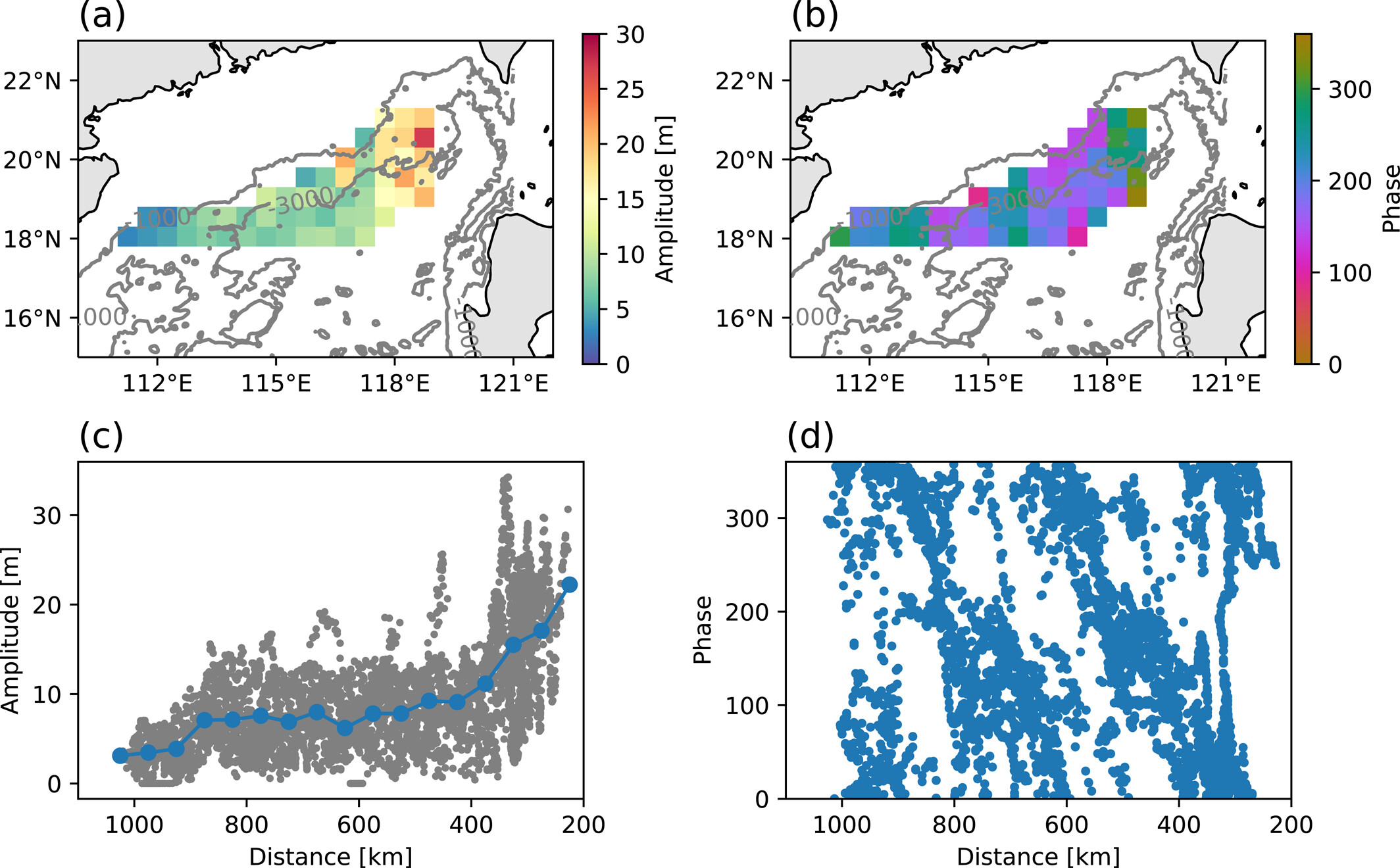Estimating the Energy Flux of Internal Tides in the Northern South China Sea Using Underwater Gliders
Zhiyuan Gao, Zhaohui Chen, Xiaodong Huang, Haiyuan Yang, Yanhui Wang, Wei Ma, Chenyi Luo
Published in Journal of Geophysical Research, February 2024
The characteristics of the energy flux of internal tides in the northern South China Sea (SCS) were explored by analyzing a fleet of underwater gliders. It was found that the low-mode diurnal internal tides with ∼300 km wavelength in the middle basin are generated predominantly in the Luzon Strait (LS) and propagate over 1,000 km to the western SCS. However, the semidiurnal internal tides are generated in multiple regions, including the LS in the east part, the continental shelf, and the islands in the west. The energy flux of the mode-1 diurnal internal tides attenuated rapidly within 450 km of the LS and was less pronounced after that. The estimated dissipation rate based on the mode-1 energy flux is about 10−8 W/kg, underling the significant role of mode-1 diurnal internal tides in bolstering far-field mixing. This study provides a unique view of the spatial pattern, energy flux, and energy sink of the internal tides in the northern SCS, which could supplement the altimetry-based results and improve the parameterization in ocean models.
Key Points
- The spatial distribution of internal tides in the northern South China Sea is revealed by a fleet of underwater gliders
- Propagation distances exceeding 1,000 km and wavelengths of ∼300 km for mode-1 diurnal tides were directly observed
- The dissipation of the mode-1 diurnal internal tides induces a dissipation rate of ∼10−8 W/kg in the far-field
Plain Language Summary
The South China Sea (SCS), is situated near the Luzon Strait (LS)—the global ocean's most active region for internal tide generation. It is abundant with internal tides. However, there is a notable lack of understanding regarding the spatial distribution of the energy flux of these internal tides in the SCS, as determined by in-situ observations. Our study, based on data collected from a fleet of underwater gliders, revealed that internal tides of diurnal frequency can propagate to the western continental shelf of the SCS, exhibiting a significant mode-1 vertical structure. In contrast, semidiurnal internal tides originated from multiple sources. We observed that energy decay occurs rapidly within 500 km of the source, while it exhibited relatively slow decay in the central region of the basin. By correlating the energy attenuation with dissipation, we found that the depth-averaged dissipation rate aligns with the directly observed value. This suggested that the mode-1 diurnal internal tides may effectively enhance the far-field mixing in the northern SCS.

Fig. Spatial distribution of (a) amplitude and (b) phase of isopycnal vertical displacements induced by diurnal internal tides at 500 m. (c) and (d) are scatterplots showing the amplitude and phase of the diurnal internal tides, respectively, as functions of distance from the Luzon Strait. The blue dots represent the average values in (c).
Gao, Z., Chen, Z., Huang, X., Yang, H., Wang, Y., Ma, W., & Luo, C. (2024). Estimating the energy flux of internal tides in the northern South China Sea using underwater gliders. Journal of Geophysical Research: Oceans, 129, e2023JC020385. https://doi.org/10.1029/2023JC020385